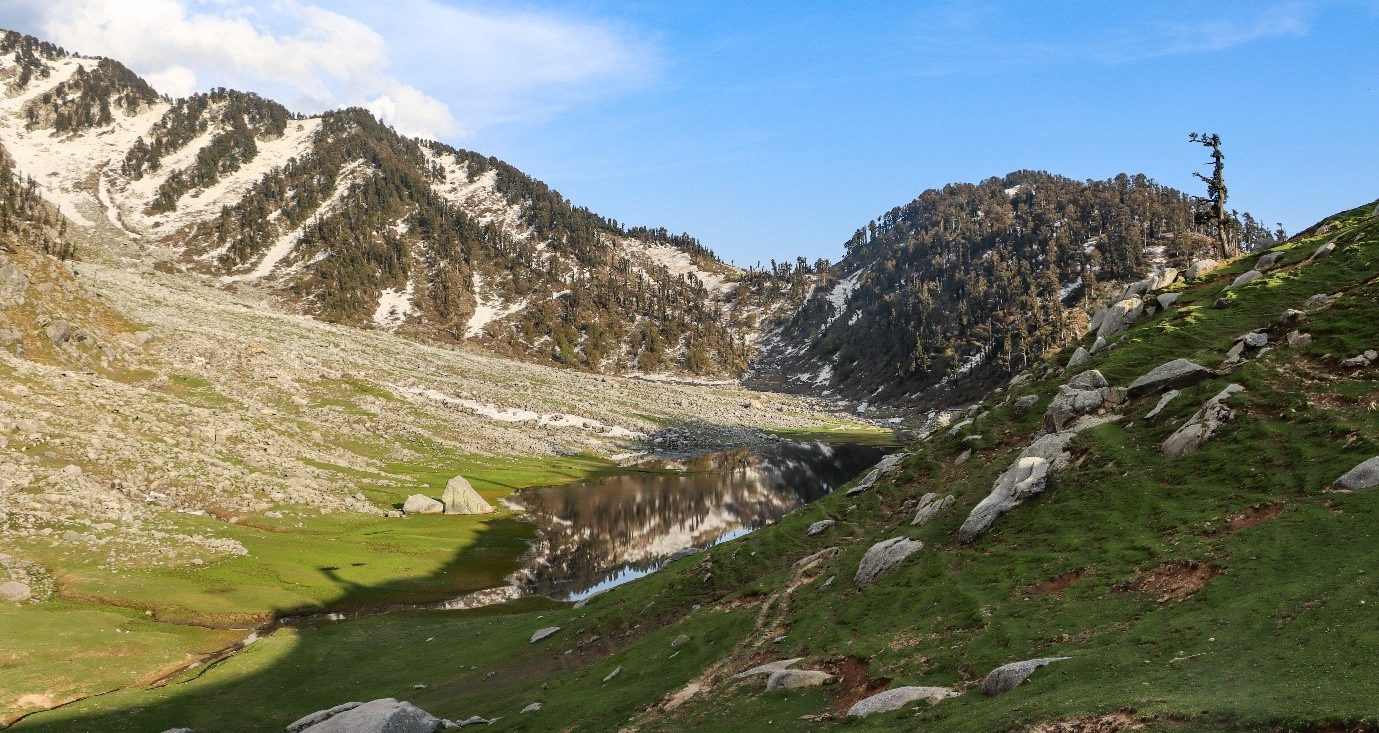
Investigating Kareri Lake, a high-altitude wetland in the Dhauladhar
-
Rivers and lakes
-
Wetland values, status and trends
On 13 May, 2023 Harsh Ganapathi (Senior Technical Officer – Ecohydrology) and Dayadra Mandal (Junior Technical Officer – Water Management) hiked to Kareri lake, a shallow freshwater glacier fed lake perched at over 2900m above sea level in Kangra district of Himachal Pradesh.
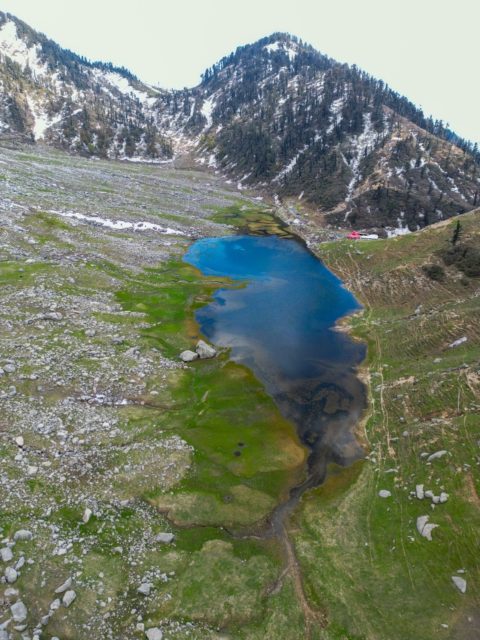
(Aerial view of Kareri lake)
Kareri lake is surrounded by lush green vegetation and rugged mountains of the Dhauladhar range. The trail to Kareri lake involved an arduous hike for nearly 4 hours traversing across lush pasturelands, exotic perennial flowers, and dense conifers along the Niyund River. The lake receives water from the snow-capped mountains on its north bank thereby ensuring a perpetual flow of water. The team also undertook random sampling of soil and water sampling at the inlet and outlet to assess its chemical properties and possible presence of peatlands. Kareri lake attracts nature enthusiasts and shutterbugs to capture stills of this Himalayan ecosystem. The team was also able to witness a committee of Himalayan Griffons, well known for its large population in Kangra district feeding on a cattle carcass.
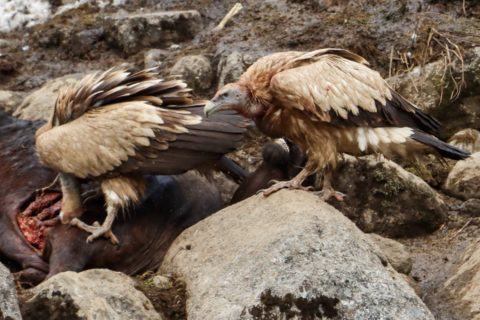
(Himalayan griffon feeding on a cattle carcass)
Currently the lake faces threat of high siltation, reduced freshwater inflows and organic pollution due to receding glaciers and anthropogenic interferences. This calls for informed action to conserve and protect this ecologically significant wetland which is a major source of freshwater to the Niyund River.
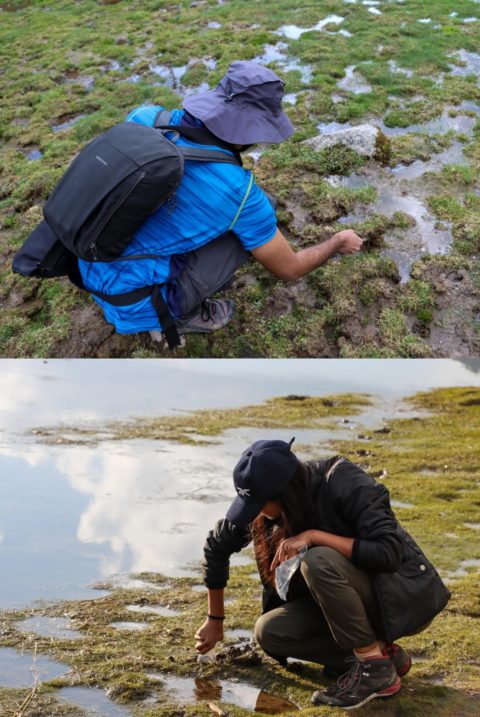
(Soil sampling at Kareri lake)
On the day of our departure, the team witnessed gathering of locals for a sacred celebration near the wetland at the Kareri Mata temple. The temple holds great spiritual significance for the villages around Kareri to commemorate the commencement of the first grazing day of the year.
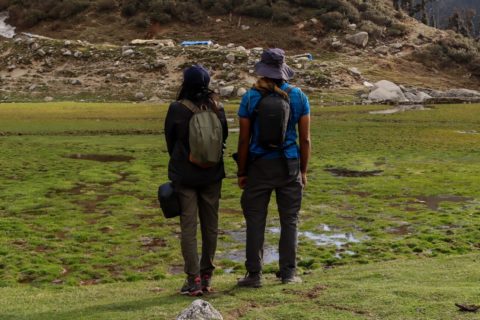
(Dayadra and Harsh at Kareri lake)
